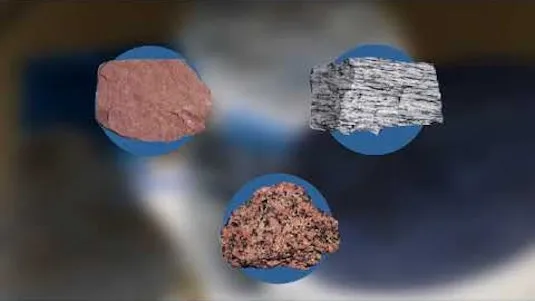
Dense Gases Liquids and Solids 
This course explores the behavior of dense gases, liquids, and solids as the density of a gas is increased. Intermolecular forces, configuration integrals, equations of state, and radial distribution functions are discussed to understand the transition from gas to liquid and the thermodynamic properties of liquids and solids. ▼
ADVERTISEMENT
Course Feature
![]() Cost:
Cost:
Free
![]() Provider:
Provider:
Coursera
![]() Certificate:
Certificate:
Paid Certification
![]() Language:
Language:
English
![]() Start Date:
Start Date:
10th Jul, 2023
Course Overview
❗The content presented here is sourced directly from Coursera platform. For comprehensive course details, including enrollment information, simply click on the 'Go to class' link on our website.
Updated in [March 06th, 2023]
What skills and knowledge will you acquire during this course?
The course will provide knowledge and skills in understanding the behavior of dense gases, liquids, and solids. Students will learn about the impact of intermolecular forces on gas behavior as density increases. They will also learn about the concept of a configuration integral and its use in estimating property changes in dense gases. Equations of state that are expansions in density from the ideal gas limit will be developed. The course will introduce intermolecular potential energy functions and their influence on P-V-T behavior. The transition from gas to liquid state will be explored, including an examination of the stability of a thermodynamic system to small perturbations. The determination of thermodynamic properties of liquids using the radial distribution function (RDF) will be discussed. Additionally, two simple models of crystalline solids will be explored.
How does this course contribute to professional growth?
This course contributes to professional growth by providing an understanding of the behavior of dense gases, liquids, and solids. The course explores the impact of intermolecular forces on the behavior of gases as their density increases. It introduces the concept of a configuration integral and its modification to the partition function, allowing for estimation of property changes in the dense gas limit. Equations of state are developed as expansions in density from the ideal gas limit. The course also examines intermolecular potential energy functions and their influence on P-V-T behavior.
Overall, this course enhances professional growth by providing knowledge and skills in understanding and analyzing the behavior of dense gases, liquids, and solids, which is valuable in various scientific and engineering fields.
Is this course suitable for preparing further education?
The course on Dense Gases, Liquids, and Solids is suitable for preparing further education. It covers topics such as the behavior of gases at high densities, the impact of intermolecular forces, the use of configuration integrals and partition functions to estimate property changes, the development of equations of state, the introduction of intermolecular potential energy functions, the transition from gas to liquid state, the examination of system stability, the determination of thermodynamic properties of liquids using the radial distribution function, and the exploration of simple models of crystalline solids.
Course Syllabus
The Configuration Integral
As the density of a gas is increased, intermolecular forces begin to affect behavior. For small departures from ideal gas behavior, known as the dense gas limit, one can estimate the change in properties using the concept of a configuration integral, a modification to the partition function. This leads to the development of equations of state that are expansions in density from the ideal gas limit. Inter molecular potential energy functions are introduced and it is explored how they impact P-V-T behavior.Thermodynamic Stability
As the density is increased, there is a transition to the liquid state. We explore whether this transition is smooth or abrupt by examining the stability of a thermodynamic system to small perturbations. We also explore Gibb's phase rule.The radial distribution function, thermodynamic properties, and MD simulations of liquid properties
In this Module we present a brief discussion regarding the determination of the thermodynamic properties of liquids using the concept of the radial distribution function (RDF), and how the function relates to thermodynamic properties. This includes introducing the use of molecular dynamics to obtain the radial distribution function.Crystalline Solids
It turns out that we can use the results of simple statistical thermodynamics to describe the behavior of crystalline solids.Pros & Cons

Learned something

Origins of specific heat for solids

Awesome syllabus and practical exercises

Informative and Professional

Quizzes don't match content

Content should be more elaborate

Units of answer not mentioned

Discussion prompts should be converted to quizzes
Course Provider

Provider Coursera's Stats at AZClass
Discussion and Reviews
0.0 (Based on 0 reviews)
Explore Similar Online Courses

NGRX angular nativescript

Advanced Machine Learning

Python for Informatics: Exploring Information

Social Network Analysis

Introduction to Systematic Review and Meta-Analysis

The Analytics Edge

DCO042 - Python For Informatics

Causal Diagrams: Draw Your Assumptions Before Your Conclusions

Whole genome sequencing of bacterial genomes - tools and applications

Viscous Fluid Flow

Metamorphic Petrology & Thermodynamics


Start your review of Dense Gases Liquids and Solids